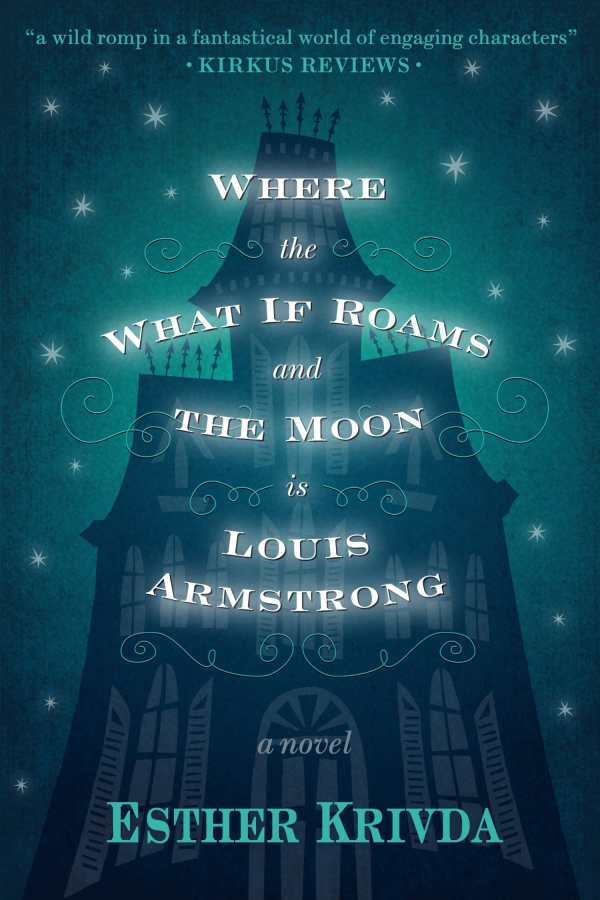Where the What if Roams and the Moon is Louis Armstrong
Krivda delivers an expansive, effusive, and fluidly stylish young adult work full of quirky energy and multigenerational appeal.
Esther Krivda’s debut novel, Where the What If Roams and the Moon Is Louis Armstrong, is a special kind of book, the kind of book that warrants many readings and a future CliffsNotes edition. It is a long, heady emporium of a book. Krivda herself describes it as a modern psychological fairy tale. Indeed, there are fairies in this book. But her own description almost belies, or at least oversimplifies, the ambitious nature of this marvelous and virtuosic work. This is the kind of book that scares off publishers, intimidates readers, and announces a major literary talent.
Where the What If Roams alludes to both William Shakespeare’s A Midsummer Night’s Dream and Jonathan Swift’s Gulliver’s Travels. Krivda borrows from both. Dueling narrators, a self-aware author, and a rambunctious band of fairies constantly bicker and interrupt each other in the retelling of the central narrative, which revolves around a ten-year-old girl named Sophia Oomla, who, though she has trouble speaking, dreams of becoming a movie star.
Swiftian satire is at work in the parallel stories of Sophia’s parents: her mother, Sigrid, who works in the New York–like city of Goliathon as CEO of Giggle, Inc., and her father, Sigmund, who works as a Freudian psychoanalyst in the Institute, a mental hospital treating distressed movie stars, or “Artistes.” The plot focuses on one pivotal week in the lives of these and supporting characters, and Krivda uses italics to break out their polyphonic inner thoughts.
The author’s technique doesn’t so much produce stream-of-consciousness as it does rivers-of-consciousness. The writing is expansive, effusive, fluidly stylish, and full of quirky energy. Krivda unleashes multiple modifiers in her longer constructions, “her sparkly, coaxy, tickly, with-a-cherry-on-top voice,” and shorter fragments in moments of dramatic tension: “She waited. And waited. Somebody was coming. Somebody. Was.” This variety in construction, combined with an ample vocabulary and a propensity for neologisms like “CEOing,” create an overall musical experience. Krivda is a verbal acrobat performing the rhythms of her imagination across the page: cartwheeling, dancing, pirouetting when needed.
Yet her playful loquaciousness doesn’t preclude moments of plaintive realism. Getting to the heart of her characters, Krivda’s wording and tone shift the way a magician’s cape shifts, revealing some sad and indelible reality of the human condition: “And he felt every inch of that vast, friendless space. He could have used some human companions. And a real hero. And not a room full of fancy. And a mind full of guilt.”
Though Krivda describes the novel as a “crossover” for both young readers and adults, it might be too challenging for early teen readers. But for older teens, and for adults especially, this is a fantastically important book about sorting out a cacophony of inner voices to find one’s true voice. As Louis Armstrong, appearing as the Man in the Moon, reminds us toward the end of the book, “There never’ll be another sound like the sound of you.”
Reviewed by
Scott Neuffer
Disclosure: This article is not an endorsement, but a review. The publisher of this book provided free copies of the book and paid a small fee to have their book reviewed by a professional reviewer. Foreword Reviews and Clarion Reviews make no guarantee that the publisher will receive a positive review. Foreword Magazine, Inc. is disclosing this in accordance with the Federal Trade Commission’s 16 CFR, Part 255.

